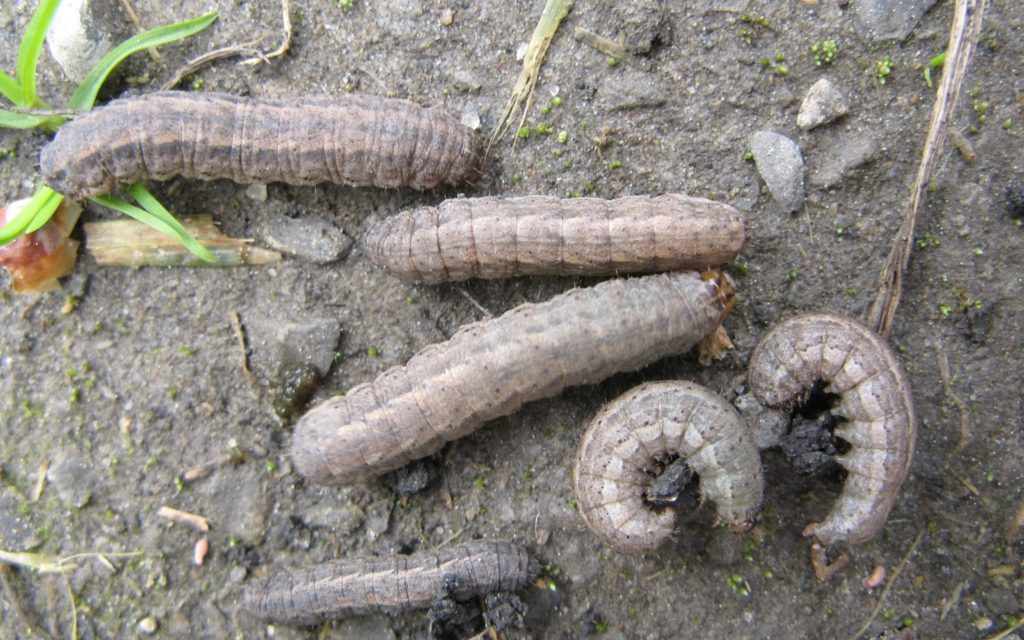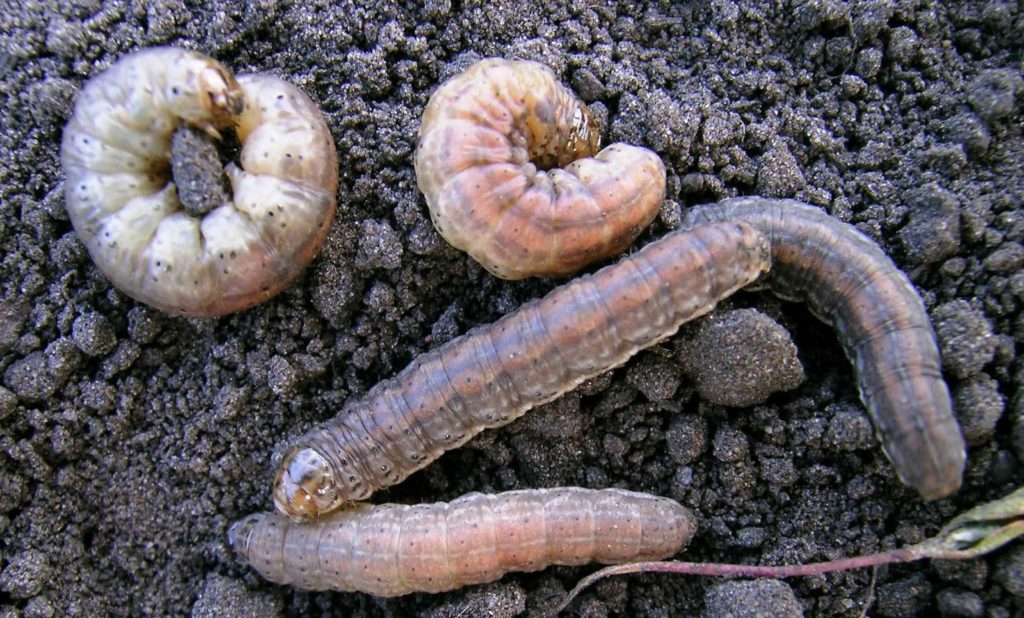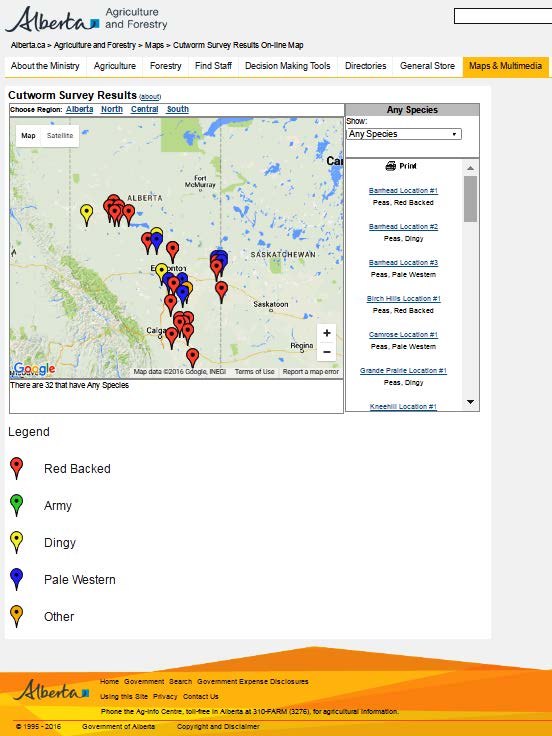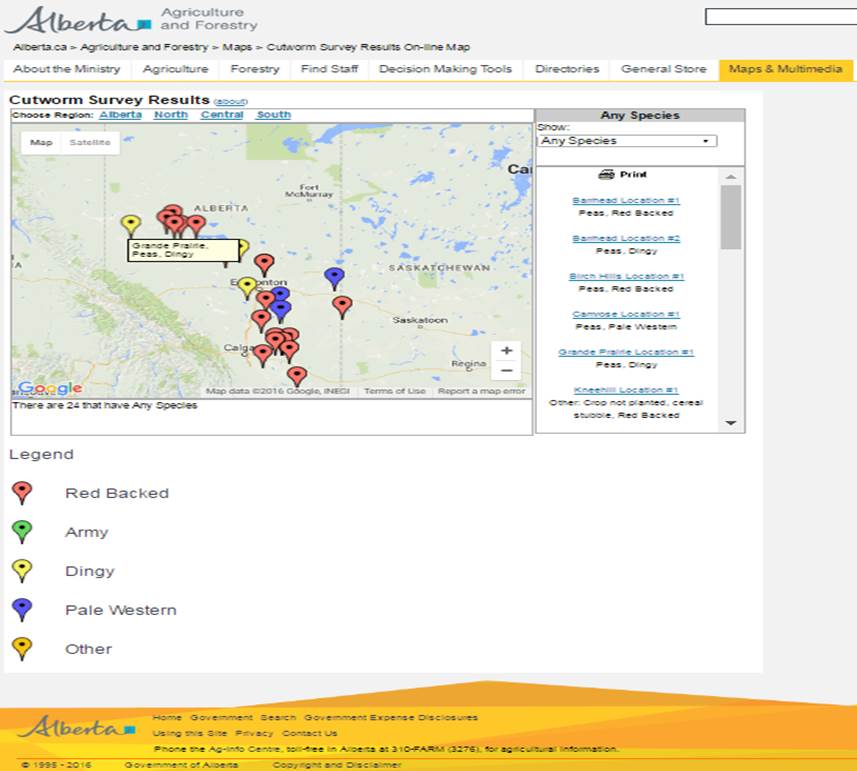Cutworms (Noctuidae) – NEW – Just in time for spring scouting! A new field guide is now available to help growers scout and manage Cutworms! Cutworm Pest of Crops is now available for free in either English or French and is featured at our new Cutworm Field Guide!
Keep an eye on fields that are “slow” to emerge, are missing rows, include wilting or yellowing plants, have bare patches, or appear highly attractive to birds – these are areas warranting a closer look. Plan to follow-up by walking these areas later in the day when some cutworm species move above-ground to feed. Start to dig below the soil surface (1-5 cm deep) near the base of a symptomatic plant or the adjacent healthy plant. If the plant is well-established, check within the crown in addition to the adjacent soil. The culprits could be wireworms or cutworms.
Several species of cutworms can be present in fields. They range in colour from shiny opaque, to tan, to brownish-red with chevron patterning. Cutworm biology, species information, plus monitoring recommendations are available in the Prairie Pest Monitoring Network’s Cutworm Monitoring Protocol. Also refer to the Manitoba Agriculture cutworm fact sheet which includes action and economic thresholds for cutworms in several crops.
For Albertans….. If you find cutworms, please consider using the Alberta Pest Surveillance Network’s “2017 Cutworm Reporting Tool”. The map now has reports of pale western and redbacked cutworms in central and southern Alberta so view the live 2017 cutworm map.
Check the Insect of the Week – the month of May highlighted cutworms! Be sure to read more about Pale western cutworms, Redbacked cutworms, Army cutworms, Dingy cutworms.









